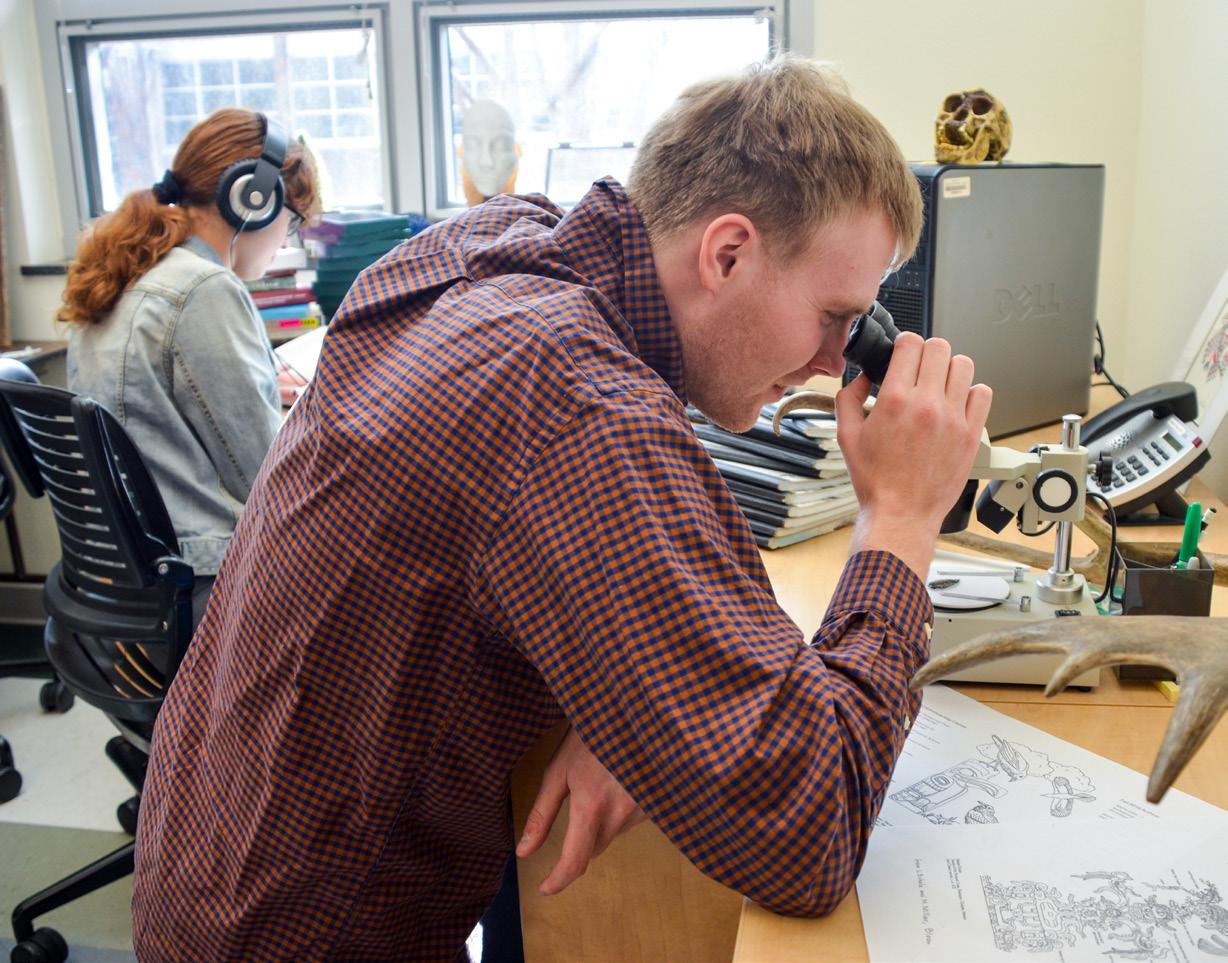
2 minute read
ADJUSTING ACADEMICALLY FROM HIGH SCHOOL TO COLLEGE
You can support your Greyhound by discussing the differences between high school and college.
Classes and Assignments
• Attendance is an important part of academic success. Missing only a few classes can put your Greyhound behind and professors will notice if they are absent.
• Make sure your Greyhound comes to class prepared, sits near the front and asks an insightful question or two and has their cell phone turned off and put away (professors will notice!).
• Professors may use the textbook as a reference and not necessarily follow the textbook chapters. Your Greyhound is responsible for knowing the textbook chapters and materials covered during the class.
• Your Greyhound should expect the unexpected when it comes to tests. Course content/information provided throughout the semester can appear on any test, especially the end-of-semester exam.
• Each course provides a syllabus (semester outline of course readings, assignment/project due dates and examination dates) to be used as a guide throughout the semester. The syllabus will typically be reviewed in the fi rst class but it is up to your Greyhound to manage what is expected throughout the semester based on the syllabus as the professor may or may not reference the syllabus again.
• Professors do not have to accept late assignments or projects.
• An entire semester's grade may just be made up of two or three big tests/projects.
• Professors take a lot of different factors into account when determining a fi nal grade, such as attendance, participation and the effort made on assignments or projects, plus overall attitude in the class.

Expectations outside of the classroom
• A big change from high school is that coursework is actually expected to be done outside of class as most of the class time will be for lectures and discussion.
• College = A lot of "free" time, unlike high school. High school students usually spend 6–7 hours a day in classes, whereas college students spend 12–18 hours in classes per week, leaving 20+ hours of "free" time a week. Greyhounds need to understand that every hour they are in courses equates to 2–3 hours of study/prep/coursework (homework) time, so this "free" time should be used wisely.
• Encourage your Greyhound to seek additional academic resources. From ENMU's free tutoring to test prep sessions, we have the tools to help your Greyhound succeed. Greyhounds are responsible for knowing what resources are available to them (hence the reason FYEX 1110 Fi rst-year Seminar is a required course), but recognizing that they need help and utilizing the resources available to them is most important. Encourage your Greyhound to seek help early and not wait until the last minute.
Building relationships with professors
• Encourage your Greyhound to connect with their professors; they can become excellent advisers/mentors and even help with future job placement. Professors are often the fi rst professional references Greyhounds will have.
• All professors at ENMU have offi ce hours. Offi ce hours are set times each week when professors are in their offi ces; Greyhounds can stop by without an appointment for advising and extra explanation on assignments or projects.

• ENMU professors want to get to know your Greyhound. The better our professors know your Greyhound, the better they will be able to assist them with a successful outcome. Greyhounds should fi nd ways to interact with their professors. Encourage them to ask questions during class, go to their of fi ce hours, or seek advice on potential career options.
• Help your Greyhound make a good impression. If your Greyhound is e-mailing their professors, ask them to be respectful and address their professors by their appropriate title (Dr., Mr., Ms., etc.).










